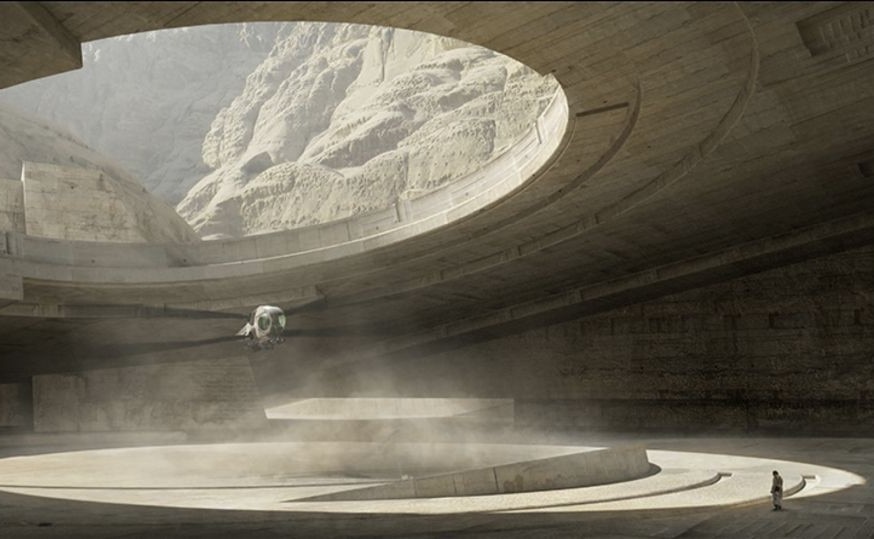Science fiction is always about design. Creating a believable future world involves inventing not only tangible elements, but also intangible ones such as mannerisms, communication styles, and social norms. It encompasses everything from clothing and grooming to the intricate details of architecture, interior design, and the industrial aesthetics of everyday objects that fill the characters’ environment.
The best science fiction films excel at this, crafting designs that make the future credible. Villeneuve’s Dune takes things a step further; it builds a complete cinematic experience around the idea that colors, shapes, and architectural elements can significantly enhance the narrative’s meaning.
Originally conceived as a single five-hour film, Dune has been divided into two parts. As a result, there are no stylistic differences between the 2021 release and the upcoming one. Both installments are set primarily on the desert planet of Arrakis and tell the story of the conflict between two noble houses vying for control of spice, a resource that confers immense political and economic influence, as depicted in the first book of Frank Herbert’s Dune cycle.
Originally conceived as a single five-hour film, Dune has been divided into two parts. As a result, there are no stylistic differences between the 2021 release and the upcoming one.
Dune chronicles the rise of a leader hailed as a prophet and superior being in a world where magic, religion, and psychic perception intertwine. At its core is an exploration of the intersection of politics and religion, the allure of fundamentalism, and the underlying human dynamics at play.
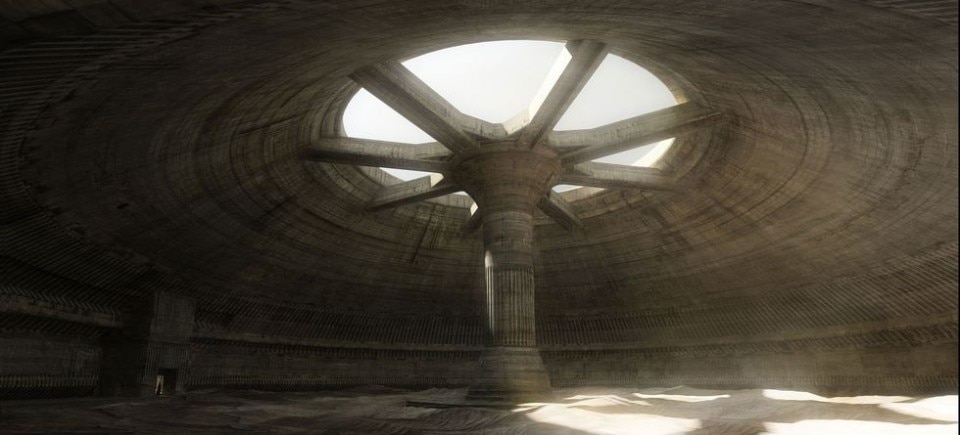
Projected far beyond the year 10,000, the future depicted in Dune is so distant that it breaks away from our present reality entirely. David Lynch’s 1984 adaptation envisioned this future with military uniforms reminiscent of familiar styles, abundant in steel, pipes, steam, and gears – an almost art deco aesthetic. It portrayed a weighty future characterized by cast iron, brass, and brick, its rounded designs bearing a resemblance to the alien aesthetic of the Flash Gordon film released four years earlier (notably produced by the same person, Dino De Laurentiis).
In contrast, Villeneuve gives each household or population in Dune its own unique design ethos, drawing inspiration from smooth, soft surfaces and prioritizing efficiency in motion and fuel consumption. Aircraft take on insect-like forms, while heavy vehicles mimic animals. Above all, a crucial distinction is made between civilizations that harmonize their architecture and aircraft with nature and those that forcefully impose their presence upon it.
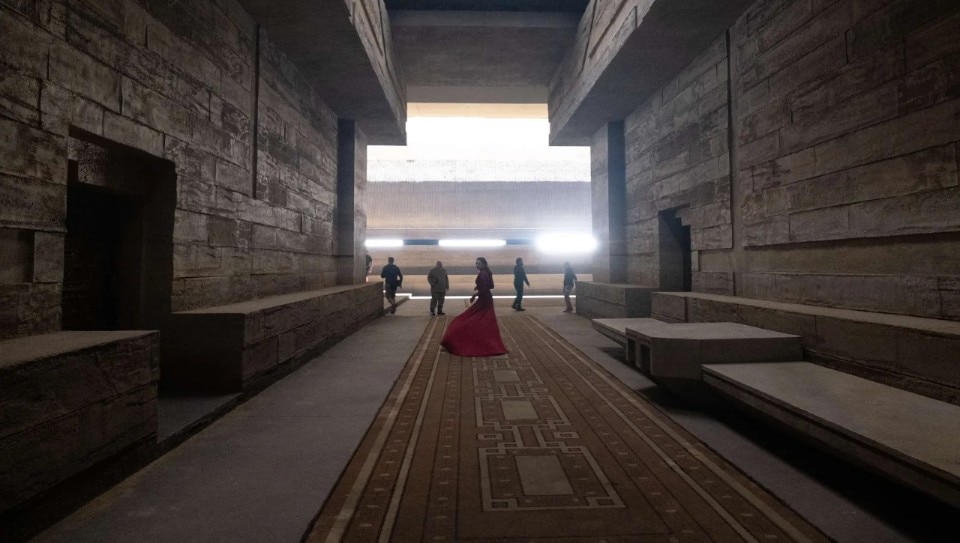
Each people its own colors
The indigenous people of Arrakis, the Fremen, are overtly reminiscent of Arabs who inhabit oil-rich regions often exploited by wealthier nations in our world. In Dune, Arrakis boasts an abundance of spice, a resource vital to interstellar travel.
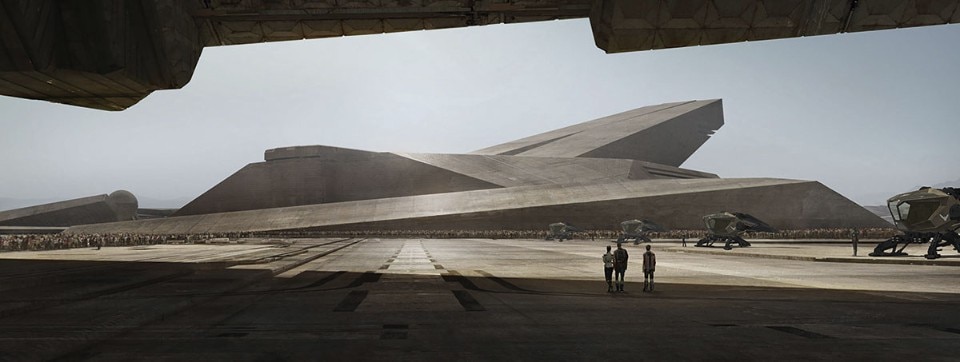
Patrice Vermette, the designer and production designer who worked with Villeneuve, was inspired by modern Arab architecture, particularly the work of Ammar Khammash and Sahel Alhiyari. He focused on architectural strategies aimed at minimizing the impact on Arrakis of both the Fremen and the colonizing factions.
Patrice Vermette, the designer who worked with Villeneuve, was inspired by contemporary Arab architecture, particularly the work of Ammar Khammash and Sahel Alhiyari.
On Arrakis, for example, winds are said to reach speeds of 750 kilometers per hour, and structures are designed with smooth, sloping surfaces and perforations to minimize resistance. The Fremen, the indigenous people, are seen living in homes buried or carved into the mountains, reminiscent of the atmosphere of the Alhambra, where light is masterfully manipulated through vaulted forms, creating reflections and giving the rooms a sense of spaciousness. A deeply religious people, the Fremen await the Messiah and believe that Paul Atreides, the film's protagonist played by Timothée Chalamet, scion of the house that should rule Arrakis but has been displaced, is indeed the Messiah who will help them take power of their planet. For them, everything exists in harmony with nature and is imbued with a spiritual meaning that transcends mere utility.
The massive structure, central to much of the first film, was physically built – a colossal set made of high-density polystyrene, inspired by Brutalist architecture. It embodies a daunting and authoritarian aesthetic meant to evoke fear in the native inhabitants, who seek to peacefully coexist with their planet and resist domination. Referred to in the film as “the largest man-made structure ever built”, this palace city sprawls across multiple levels, resembling a Mesopotamian ziggurat on the outside and a bomb shelter within. Regardless of its designer, each structure features indirect lighting to illuminate without producing excessive heat and creates large shadows – an essential feature on the scorching planet.
While sandy yellow dominates the Fremen palette, black reigns supreme for the antagonistic Harkonnen faction. On their planet, even the sun appears black, while their complexion is white, contrasting with the black tones of their clothing. Their world is monochromatic, devoid of color, as vividly portrayed in scenes set within their realm. Symbolic of malevolence, the Harkonnen society reflects the organizational structure of ancient Romans, featuring deadly games in a stadium within a modernist structure, mass gatherings around their leader, and pervasive death, all illuminated by stark, shadowless light. The striking black and white aesthetic of this portrayal leaves a lasting impression.
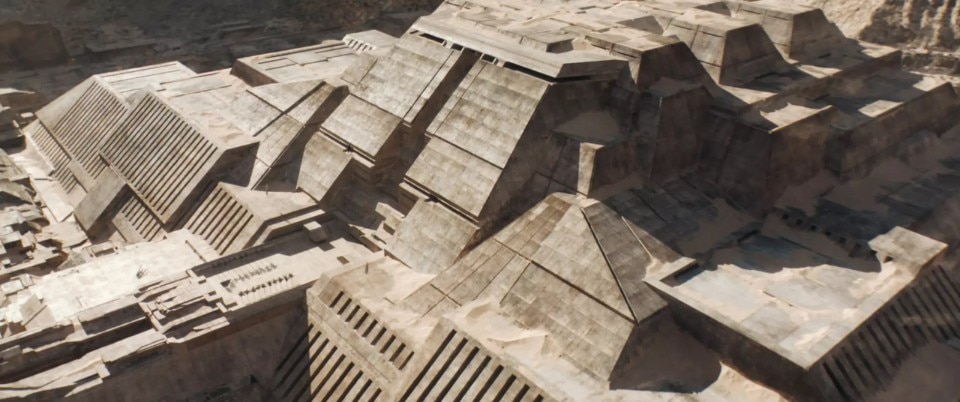
Every technology its function
What sets Dune apart is its meticulous attention to the mechanics of everything depicted in the movie. Films can’t always explain every technology or technique used, so as the story progresses, it’s the visual imagery that shows the functionality of the designs.
In the opening scene, for instance, we see a rat-kangaroo, a creature of Arrakis, drinking its own sweat. Later, we understand how the suits worn by the native Fremen mimic this creature’s survival tactics in the desert. The planet is so hostile that the only way to survive requires emulation, not domination, of the native wildlife.
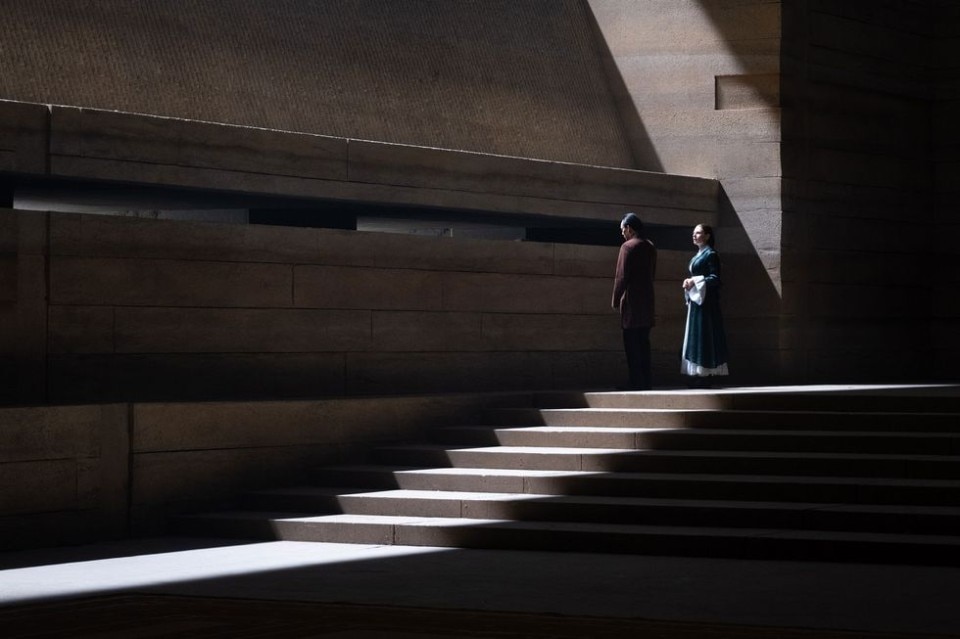
This is just one example of how the film communicates silently through its design. Colored shields distinguish combatants, weapons are intuitively designed, and projection technology is intricately crafted. There are also poisoned arrows and mechanisms for summoning colossal desert worms – all represented by precisely engineered objects. These elements not only fulfill the conventional role of science fiction design in creating a believable futuristic setting, but also serve to elucidate the narrative and add depth to the world.
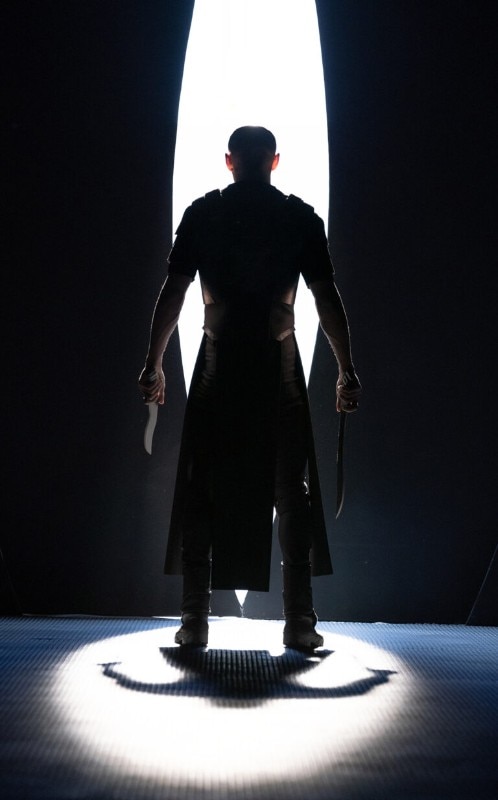
Dune is more than just a movie; it’s an entire fictional universe – a meticulously crafted environment where countless stories can unfold (with plenty more books to adapt). For true immersion, every aspect must feel complete, down to the tiniest detail. Consistency and clarity in the design of each object are crucial, as is the development of specific languages that sound original yet remain consistent throughout.
Dune is more than just a movie; it’s an entire fictional universe – a meticulously crafted environment where countless stories can unfold.
A standout example of this attention to detail lies in the insect-inspired flying machines designed by set designer Vermette. There are the imposing cockroaches, the ovoid motherships reminiscent of 1920s zeppelins, and the individual dragonfly-shaped craft (designed by George Hull) that achieve flight through the flapping of metal wings (which were actually built and operational, even though they couldn’t actually fly). The concept of desert vehicles taking the form of animals directly mirrors the theme of emulating the survival strategies of the native fauna of Arrakis.
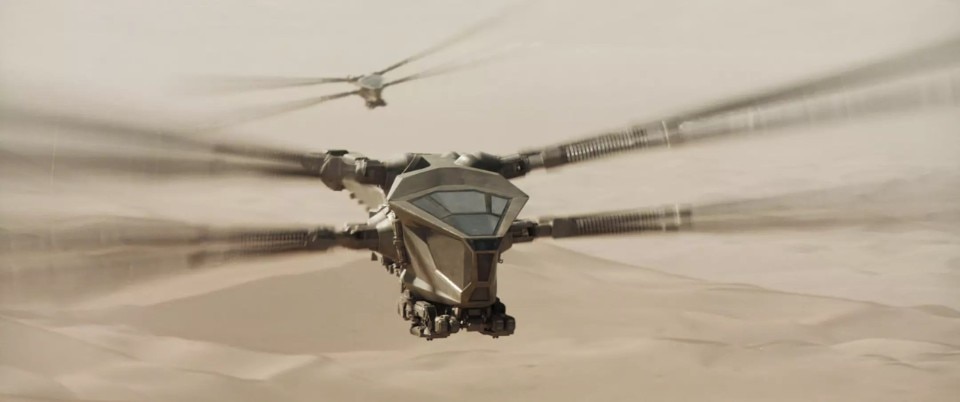
Villeneuve’s future
Having previously delved into visions of the future with Arrival and Blade Runner 2049, Denis Villeneuve has showcased his talent for imagining the unknown. In Arrival, set in the present day, he envisioned an alien spaceship with technology beyond our understanding, a completely foreign language, and a unique communication system. In Blade Runner 2049, he expanded on Ridley Scott’s original film, introducing new elements like desert worlds (whose visuals bear a resemblance to the deserts of Dune, thanks to the same cinematographer handling lighting and color). The theme of technology shaping masters and gods inspired the depiction of stark environments reminiscent of Brutalist offices found behind the Iron Curtain, where light and surfaces interacted to imbue spaces with character.
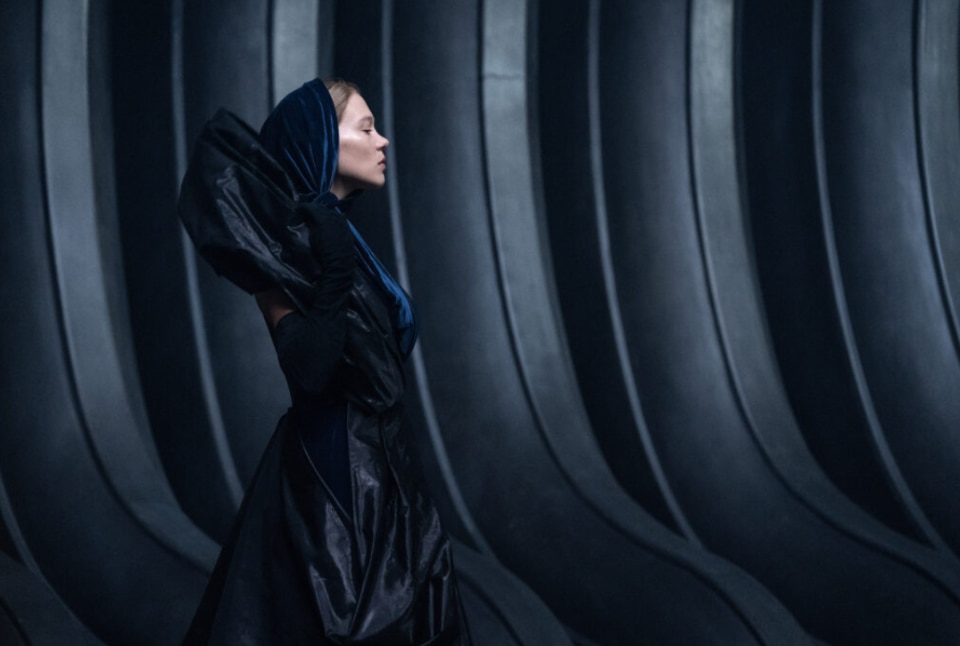
Now, in Dune, the hidden Fremen structures feature discreet shafts of light, while the imperial buildings of Arrakis’ rulers are grand and pyramidal, and the Harkonnen structures are windowless, cloaked in darkness to conceal their inhabitants. So when we encounter a completely different setting – a residence on another planet belonging to the Emperor of the Universe – we are struck by the deliberate design choice. Once again, it’s a design that, without words, conjures images of the Middle Ages and the historical evolution of civilization. It speaks of an architectural style where those who separate themselves from the masses seek solace and seclusion within their privileged bubble.
Opening image: Courtesy Warner Bros


